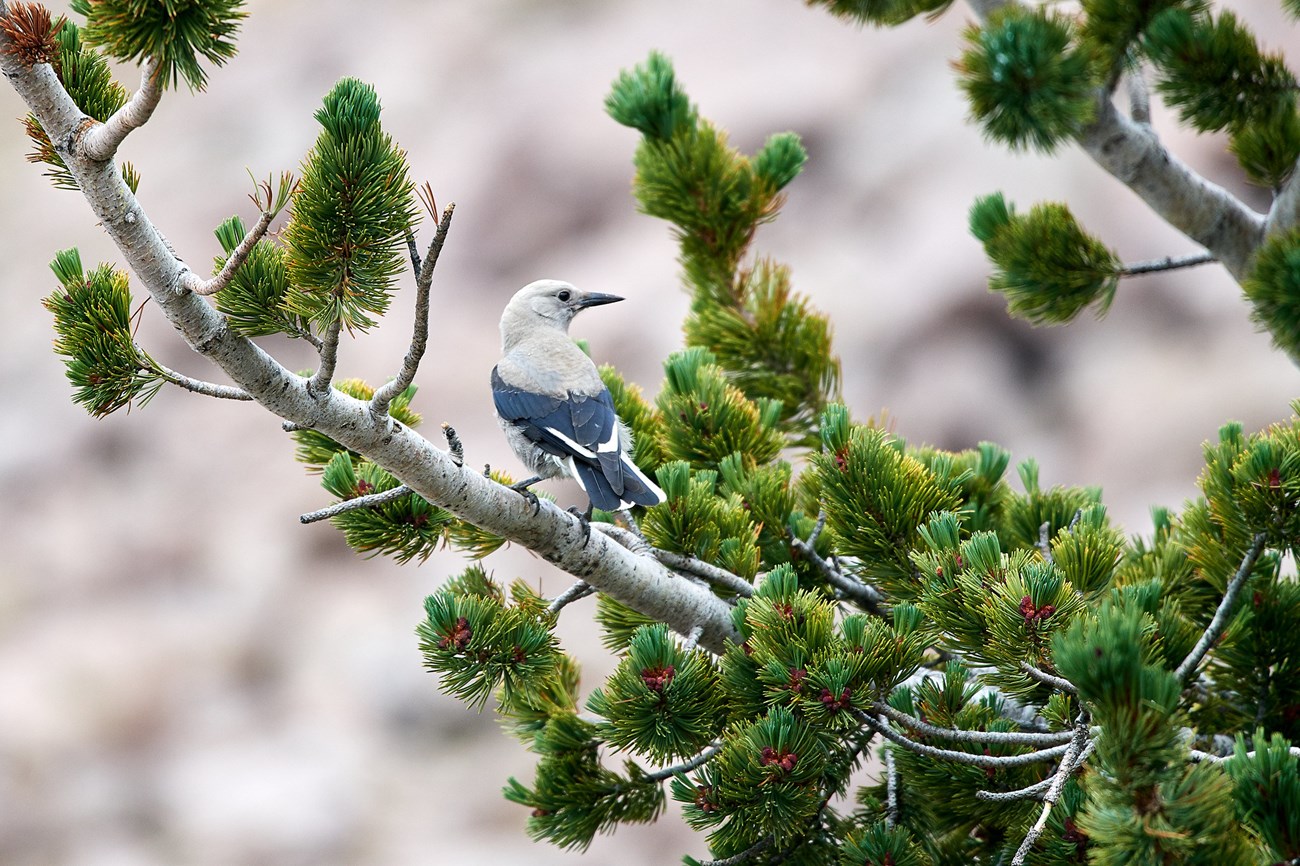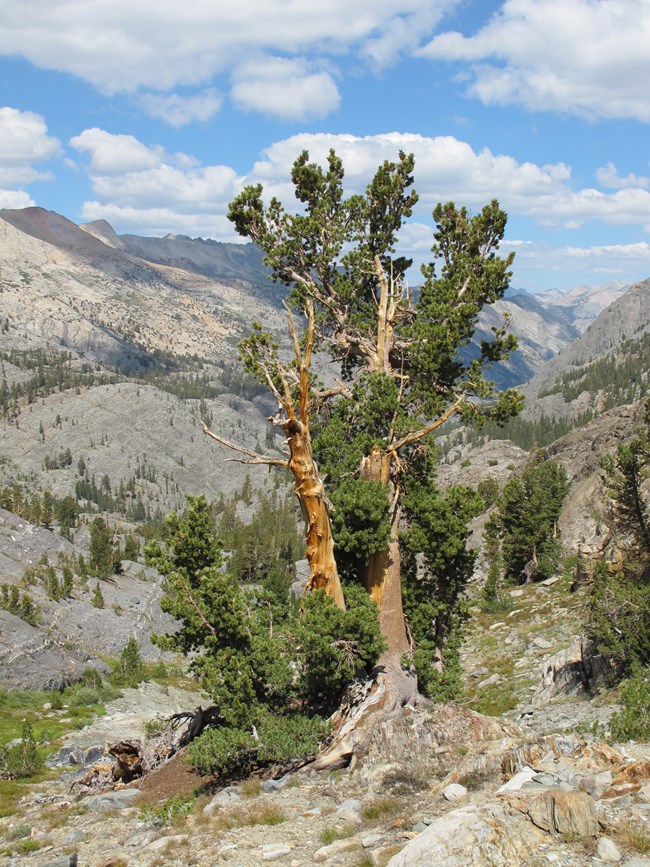Last updated: September 22, 2025
Article
Is the Fate of Whitebark Pine in the Beak of Clark's Nutcracker?

Photo by Frank D. Lospalluto / Flickr CC BY-NC-ND 2.0
Clark’s nutcracker, a raucous and charismatic bird in the crow and jay family, frequents the higher elevations of the mountain west where it forages largely on whitebark pine seeds and caches thousands for later use. The whitebark pine, in exchange for providing highly nutritious seeds for Clark’s nutcrackers, as well as many other wildlife species, benefits from the bird’s seed-storing behavior as many of those cached seeds are forgotten and subsequently germinate. This interdependence is what defines a mutualistic relationship, but for Clark’s nutcracker and whitebark pine, it is not equal. The whitebark pine is largely dependent on the nutcracker for its seed dispersal; the cones don’t open on their own and require the nutcracker to extract the seeds with its specialized beak. Furthermore, the seeds are often carried miles away and buried by nutcrackers, enabling whitebark pines to establish in other areas. But Clark’s nutcrackers will also eat the seeds of other pine species, and because they’re mobile, can abandon whitebark pine stands for other more productive food sources if whitebark pine seed production is poor.

Photo courtesy of Peggy Moore
Monitoring Projects Enable Regional-Scale Analyses
Whitebark pine, an iconic and keystone species in the subalpine zone of the west, is in dramatic decline in recent decades due to the combined impacts of native mountain pine beetle, a non-native fungus that causes the disease white pine blister rust, changing fire regimes, and climate change. For this reason, it is monitored in several western national parks, including Mount Rainier and North Cascades, where white pine blister rust is widespread, and Yosemite, Sequoia, and Kings Canyon, where the disease is still rare in whitebark pine.
These five national parks are also monitoring landbirds, presenting a unique opportunity to do a regional-scale analysis of the population trends in and association between whitebark pine and Clark’s nutcrackers. Researchers from the North Coast and Cascades and the Sierra Nevada Inventory and Monitoring networks, in conjunction with partner organizations, the Institute for Bird Populations and Northern Rockies Conservation Cooperative, used nutcracker observations and whitebark pine population information to examine whether nutcracker abundance could be explained by whitebark pine trends in density and condition.
The results from this research, reported in a recent journal article, were varied across the five parks and suggest that, depending on availability of alternative food sources within or outside each park, Clark’s nutcrackers may leave the areas where whitebark pines are found. This may result in reduced seed dispersal for whitebark pines, threatening their persistence on the landscape. Similarly, Clark’s nutcrackers may disappear from their historic ranges as the distribution of whitebark pine is diminished, leading to a vicious cycle that unravels this mutualistic relationship.
Park-specific Highlights
Spatial analyses in the Sierra Nevada parks indicated that nutcracker density varied with elevation and whitebark pine cover, and for Sequoia and Kings Canyon, also with cover of foxtail pine, another white pine. This study strengthened previous suggestions that Clark’s nutcrackers forage on foxtail pine seeds, but additional data are needed to understand how overlapping whitebark and foxtail pine populations may affect Clark’s nutcracker density and foraging behavior in the southern Sierra. In temporal analyses in the Mount Rainier and North Cascades National Parks, nutcracker density declined only in Mount Rainier, where whitebark pine mortality was higher, suggesting that food sources differed between the two parks or between the regions surrounding them. Areas just east of North Cascade National Park have greater cover of Douglas fir and other pine species on which nutcrackers are known to forage; this may in part explain the fluctuation in nutcracker density in the park that did not appear to trend with whitebark pine mortality.
Learn more about the details of this study’s findings in the Institute for Bird Populations blog post!
To access the journal publication, visit the PLOS ONE website.
Ray, C., R. M. Rochefort, J. I. Ransom, J. C. B. Nesmith, S. A. Haultain, T. D. Schaming, J. R. Boetsch, M. L. Holmgren, R. L. Wilkerson, and R. B. Siegel. 2020. Assessing trends and vulnerabilities in the mutualism between whitebark pine (Pinus albicaulis) and Clark’s nutcracker (Nucifraga columbiana) in national parks of the Sierra-Cascade region. PLoS ONE 15(10):e0227161
For more information, contact Miranda Terwilliger, North Coast and Cascades Network Landbird Monitoring Project Lead.
